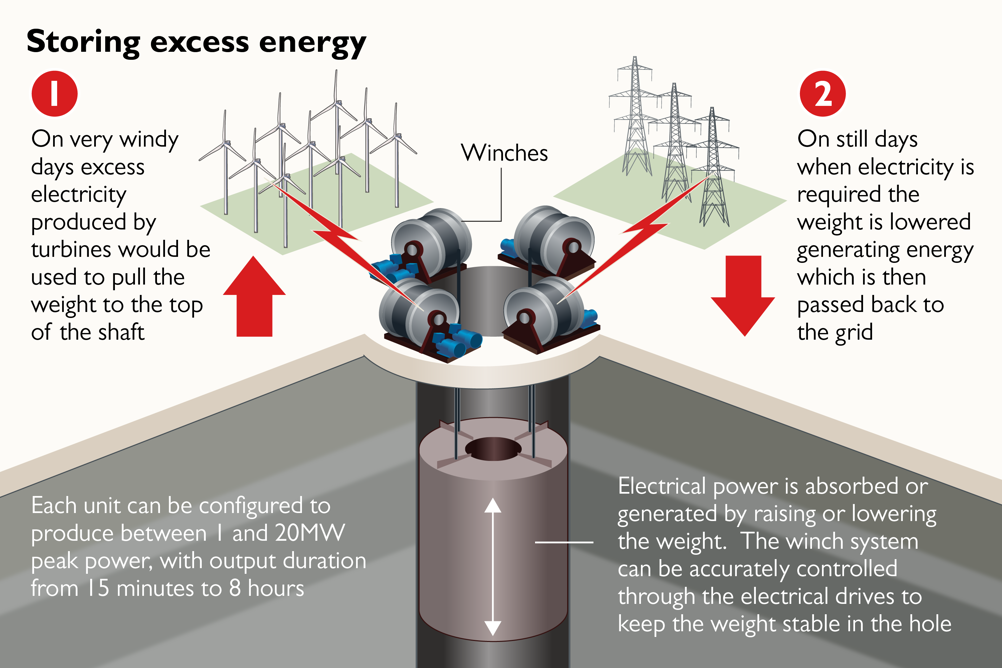Using enormous weights moved up and down vertical shafts to store and generate energy, Gravitricity already has projects up and running in the UK and mainland Europe. The Edinburgh-based company says its system can last up to 50 years and deliver energy storage at around half the price of lithium-ion batteries, and without the need for precious metals.
India’s target of 500GW of renewables – much of it solar - by 2023 will require enormous amounts of energy storage to facilitate a reliable grid. Backed with £194,000 from Innovate UK, Gravitricity will now embark 12-month project to identify a shortlist of Indian sites for a demonstration scheme.
Related content
“India has very few fossil fuel resources and is committed to adopting renewables to fuel its economic growth,” said Chris Yendell, project development manager at Gravitricity. Solar power is extremely cheap in such a sunny country but brings with it a need for energy storage to meet peak morning and evening demand, both of which typically occur during the hours of darkness.
“With the introduction of renewable energy generation at this scale, new flexible storage services will be essential to ensure the grid continues to operate in a stable manner. Gravitricity's versatile technology is ideally placed to deliver the balancing services required to achieve this stability.

“It is also a relatively simple technology. It doesn’t rely on any rare earth metals, and has a very long lifespan, meaning it can be manufactured and deployed locally alongside vast amounts of new grid infrastructure which will also be required to meet the rapid growth in demand.”
Gravitricity’s partner Panitek Power will work with local partners in India to identify sites and supply chain firms that can deliver the pilot project. According to Panitek Power’s chief commercial officer Parag Vyas, India’s fragile grid and grand ambitions for renewables make energy storage an absolutely vital technology for the rapidly growing economy.
“India has an immediate and growing need for energy storage technologies,” said Vyas. “In many locations there is little or no grid, and it makes sense to integrate energy storage within their evolving infrastructure to cope with intermittent generation.
“In addition, as a country’s share of renewables rises, this can cause frequency and voltage disturbances in the existing grid due to mismatch of load demand and generation. Gravitricity’s technology has a response time of less than one second and can be cycled thousands of times, making it ideally suited to grid balancing and rapid frequency response services.”





Labour pledge to tackle four key barriers in UK energy transition
I'm all for clarity and would welcome anyone who can enlighten me about what Labour's plans are for the size and scale of this Great British Energy....